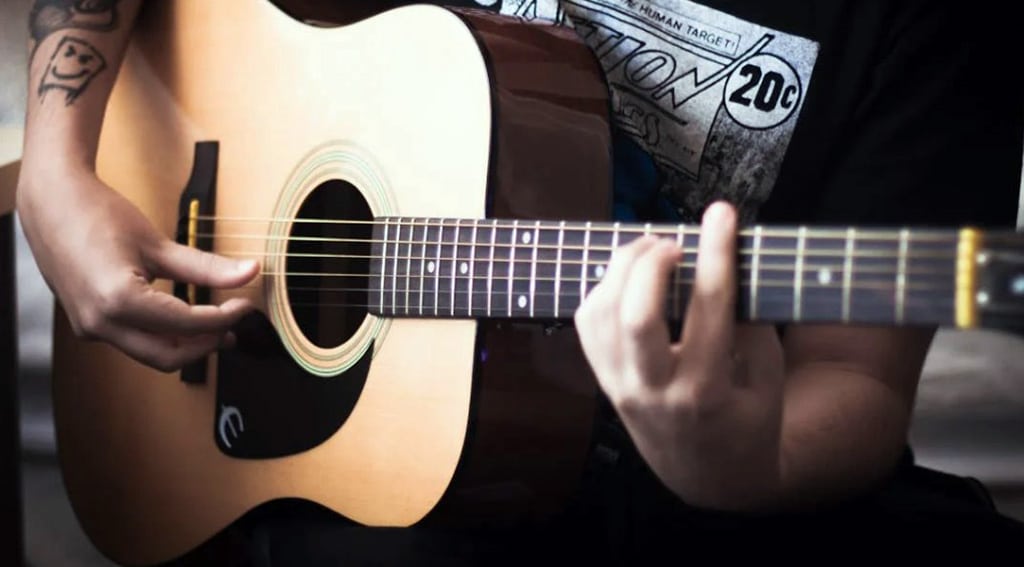Best
Small
Acoustic Guitar
-
Overall: 9/10
-
Best Feature: Padded Gig Bag
-
TedScore™: 9/10
Best
Professional
Acoustic Guitar
-
Overall: 10/10
-
Best Feature: Has a spruce top and walnut fretboard for a sublime
-
TedScore™: 10/10
Best
Compact
Acoustic
Guitar
-
Overall: 9/10
-
Best Feature: Spruce Top Designed with a smaller body
-
TedScore™: 9/10
Choosing the Best Acoustic Guitar for Gigging can transform your live performances, bringing both sound quality and comfort to new heights.
Every musician has faced the challenge of finding that ideal guitar, one that seamlessly combines portability with sound excellence. From the striking looks of the Guild F-55 to the budget-friendly yet high-performing Big Baby Taylor BBTe, this article explores top gigging acoustic guitars that blend beauty, functionality, and affordability.
I’ll guide you through various options, whether you’re seeking traditional acoustics or innovative acoustic-electric guitars, to help match the right guitar to your gigging style. Let’s discover the instrument that will turn every performance into an unforgettable experience.
The Best Guitars for Different Gigs
Selecting the right acoustic guitar for gigging can significantly impact your live performances. From aiding travel convenience to meeting venue acoustics, these options cater to various gig needs and musician preferences.
Versatile Guitars for Multiple Venues
The Yamaha FGX800C is a reliable and affordable acoustic-electric guitar, perfect for live performers and beginners alike. Featuring a solid spruce top, cutaway body for easy upper fret access, and System 66 electronics with a built-in tuner, it delivers rich, balanced tone both unplugged and amplified. Durable, versatile, and stage-ready.
Yamaha FGX800C Electro Acoustic Guitar

PERFECT FOR: beginners to professional players
FEATURES: Has a spruce top and walnut fretboard for a sublime, bright tone
OTHER INFO: With redesigned scalloped X bracing that enriches the low to mid-range
Yamaha FGX800C Electro Acoustic Guitar
- Projects a balanced, resonant tone
- Can be used for a variety of playing styles
- Boasts classic aesthetics with many hidden modern elements
- With a plastic nut and saddle
When you click ‘Check Price’, you’ll see there are loads of great places to buy this item. Our personal favorite is Sweetwater for the US, and Thomann and Gear4Music for the UK & Europe.
They are the largest music retailers, with excellent customer service, competitive prices, really fast shipping, and the longest guarantees.
The professional musician who wrote this article combined many things,
from the product build, manufacturer’s reputation through to feedback
from other users, to create our famous TedScore™.
Travel-Friendly Options for Touring Musicians
Touring musicians often seek guitars that are easy to transport while still delivering top-notch sound. The Martin LX1 is compact and lightweight, making it ideal for travel without sacrificing sound quality. Its efficiency in handling rough conditions ensures it’s as durable on the road as it is on the stage.
MARTIN LX1 LITTLE MARTIN
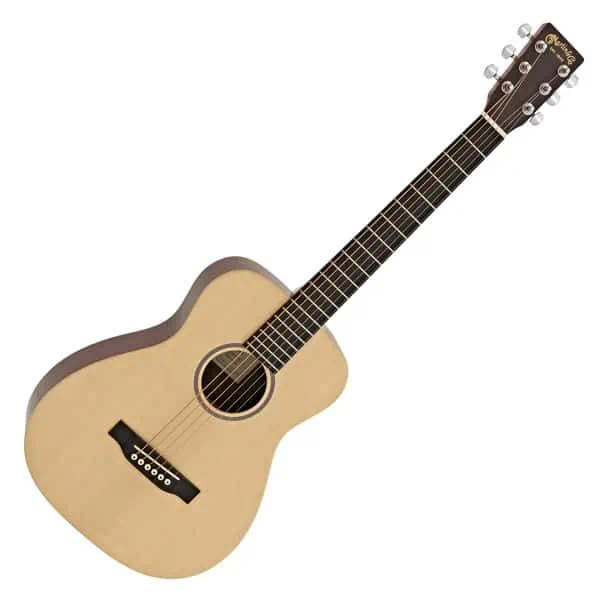
Young Players
FEATURES: Solid sitka spruce top.
- Modified low oval neck style.
- Small size makes it perfect for the young crowd
- Premium solid top emanates clear and intricate sound when strumming.
- Laminated wood body lowers its quality construction
When you click ‘Check Price’, you’ll see there are loads of great places to buy this item. Our personal favorite is Sweetwater for the US, and Thomann and Gear4Music for the UK & Europe.
They are the largest music retailers, with excellent customer service, competitive prices, really fast shipping, and the longest guarantees.
The professional musician who wrote this article combined many things,
from the product build, manufacturer’s reputation through to feedback
from other users, to create our famous TedScore™.
Another choice is the GS Mini with either the Es-b or the Es-2 electronics. Despite its smaller build, it produces a powerful sound that belies its size. This feature, combined with its portability, provides an excellent balance for those constantly on the move.
Taylor GS mini
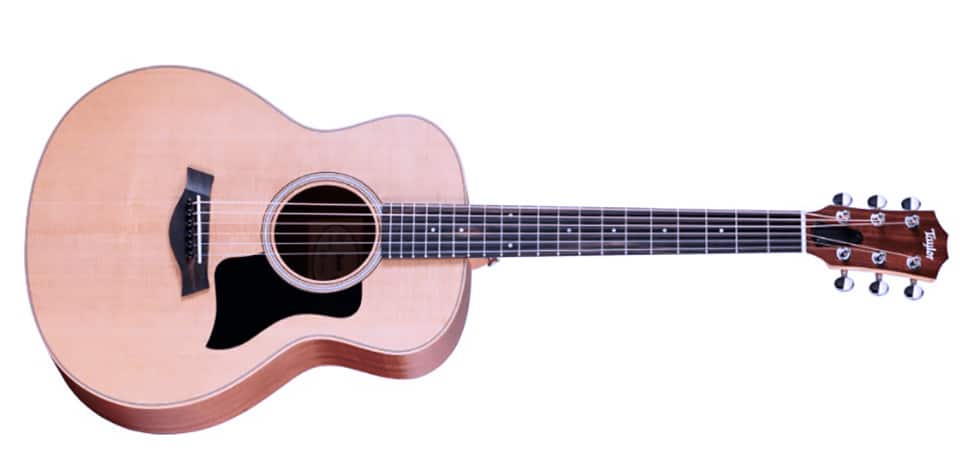
FEATURES: designed with a smaller body
OTHER INFO: Solid Sitka Spruce Top
- The compact size of the Taylor GS Mini makes it easy to transport
- Rich Sound Quality
- Limited Bass Response
When you click ‘Check Price’, you’ll see there are loads of great places to buy this item. Our personal favorite is Sweetwater for the US, and Thomann and Gear4Music for the UK & Europe.
They are the largest music retailers, with excellent customer service, competitive prices, really fast shipping, and the longest guarantees.
The professional musician who wrote this article combined many things,
from the product build, manufacturer’s reputation through to feedback
from other users, to create our famous TedScore™.
These models ensure musicians don’t need to choose between convenience and performance.
Selecting the Best Acoustic-Electric Features
When it comes to choosing an acoustic-electric guitar for gigging, certain features are essential. Pickup systems, onboard preamps, and feedback control mechanisms are crucial for achieving the best sound quality and performance.
Pickup System Integration
Selecting the right pickup system is crucial for sound amplification. I find that piezo pickups are popular for their direct and clear sound, often found in brands like Fishman Sonitone or Sonicore.
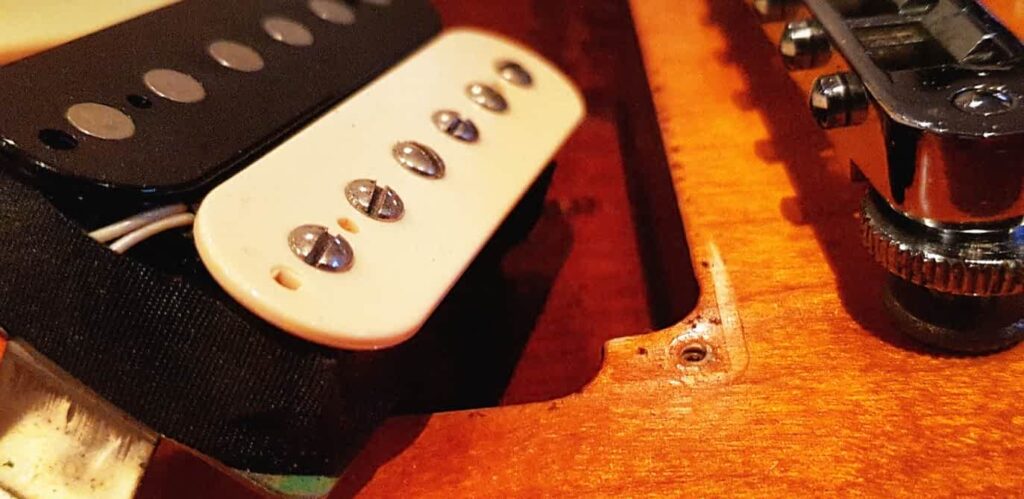
Magnetic pickups are great, too, offering a warm tone similar to electric guitars. Each choice will impact sound quality, so it’s vital to consider your music style and environment.
A well-integrated pickup system blends seamlessly with your playing. This helps capture the nuances of your performance, whether on stage or in a casual jam session.
Onboard Preamps and Tuners
Having onboard preamps can transform your gigging experience. They allow for real-time sound adjustment, crucial for adapting to different acoustics.
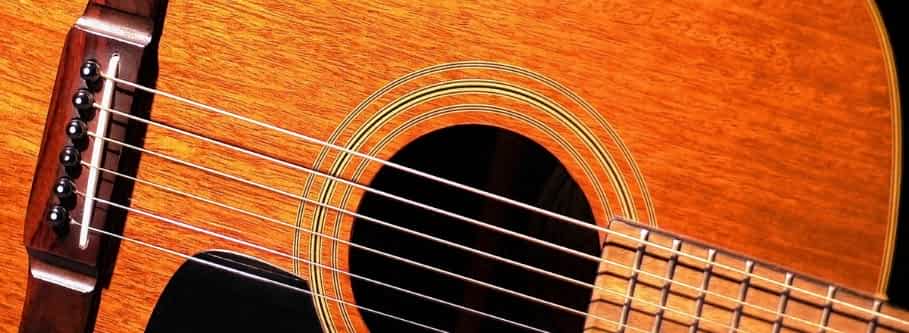
One of my go-to options is the Takamine TK-40D Preamp, which offers easy control over volume, EQ settings, and even has a built-in tuner.
Incorporating a tuner within the preamp is a real lifesaver during performances. You can quickly tune up between songs without additional equipment cluttering your space.
Feedback Control for Amps
Managing feedback effectively is critical when amplifying your acoustic-electric guitar. Feedback can disrupt the clarity of your performance. I often use notch filters or feedback busters to counteract these issues, keeping the sound crisp.
When paired with an acoustic guitar amp designed for these instruments, feedback control becomes even easier. This combo ensures smoother transitions between songs and fewer distractions.
Reliable feedback mechanisms prevent stage disruptions, letting you focus entirely on your music.
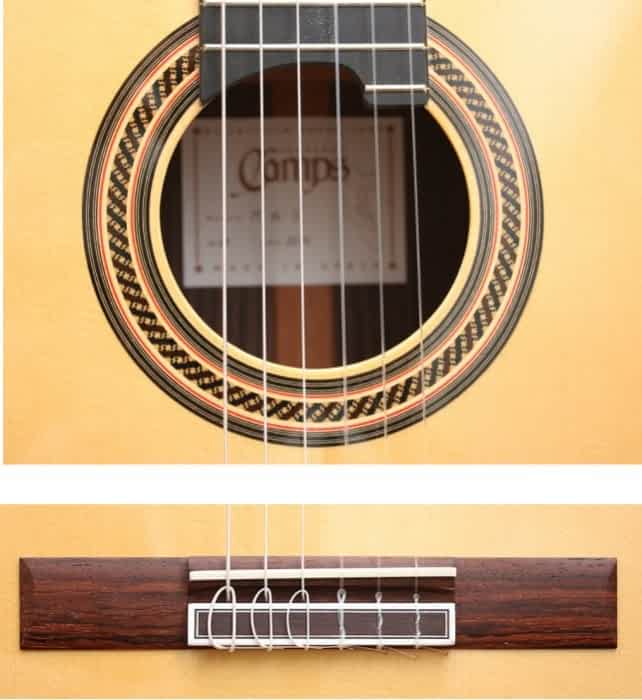
Understanding Guitar Construction for Live Performance
One of my go-to options is the Takamine TK-40D Preamp, which offers easy control over volume, EQ settings, and even has a built-in tuner.
Incorporating a tuner within the preamp is a real lifesaver during performances. You can quickly tune up between songs without additional equipment cluttering your space.
Tonewoods and Sound Projection
The type of wood used in a guitar significantly influences its sound. I often look for solid spruce or solid Sitka spruce tops due to their balance of strength and resonance. These materials offer a crisp and dynamic sound that projects well in live settings.
Back and sides made from mahogany or maple further refine sound character. Mahogany adds warmth and depth, while maple provides brightness and clarity. An ebony fingerboard can also enhance playability with its smooth feel and durability.
Understanding these elements helps me select guitars with powerful sound projection. Each type of wood shapes the tonal qualities, combating varying acoustics of live venues.
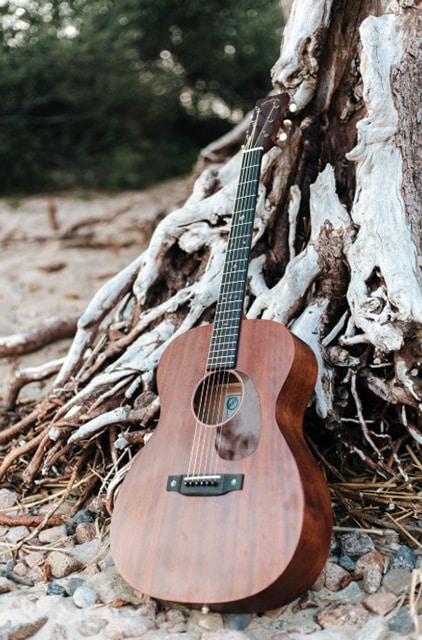
Body Shape and Sound Resonance
Body shape plays a crucial role in sound resonance and projection. I often gravitate toward dreadnought guitars for their bold sound and robust low end. They suit powerful strumming and full-bodied tones.
For those who prefer more nuanced sounds, similar attention should be given to smaller bodied guitars. Jumbo bodies, with their larger surface area, can produce rich and expansive sounds ideal for fingerpicking styles.
This choice impacts how the guitar interacts with different performance spaces. Choosing the appropriate arrangement can significantly impact a live performance, enabling the guitar to resonate with clarity.
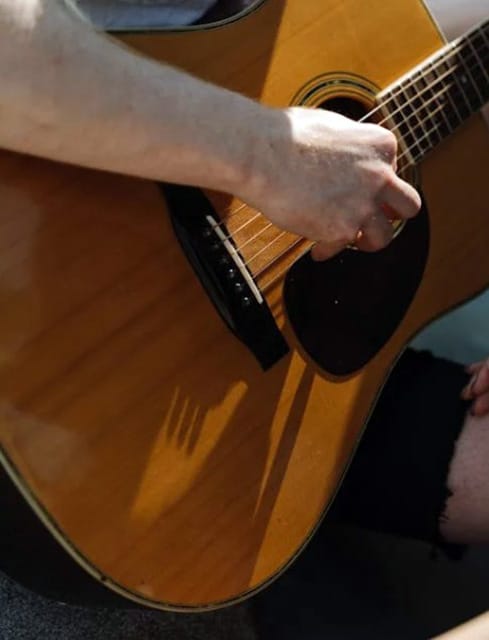
Importance of Build Quality
A guitar’s build quality directly affects its durability and performance. Bone nut and saddle components contribute to long-lasting tuning stability and better sound transfer. This enhances string vibration directly in the instrument.
While some guitars use high craftsmanship with materials like laminated sapele, robust construction methods should also be considered. This ensures they withstand the demands of frequent gigging.
Reliable build quality ensures my guitar maintains its sound integrity over time. In live settings, it’s crucial for the instrument to endure the rigors of performance without compromising quality or reliability.

Playing Comfort and Playability
When it comes to acoustic guitars for gigging, comfort and playability are paramount. Action and fingerboard design play crucial roles in ease of play.
Meanwhile, the neck profile and material affect how comfortable the guitar feels during long gigs. Let’s explore each aspect to understand its importance in a gigging guitar.
Action and Fingerboard Design
A guitar’s action, the distance between strings and the fretboard, greatly influences its playability.
I prefer a low action because it requires less finger pressure, making it easier to play for extended periods. This is particularly helpful during long gigs where comfort is key.
Fingerboard material, like ebony or walnut, can also affect my playing experience. Ebony is smooth and durable, providing a slick surface that makes finger movement easier.

On the other hand, walnut fingerboards offer a warm tone and a softer touch under my fingertips. Choosing the right combination of action and fingerboard material is vital for achieving a comfortable and responsive instrument.
Neck Profile and Material
The neck profile shapes how my hand fits around the neck. A slimmer neck is often more comfortable for my grip, particularly if I have smaller hands or prefer faster playability. The material of the neck is equally important.
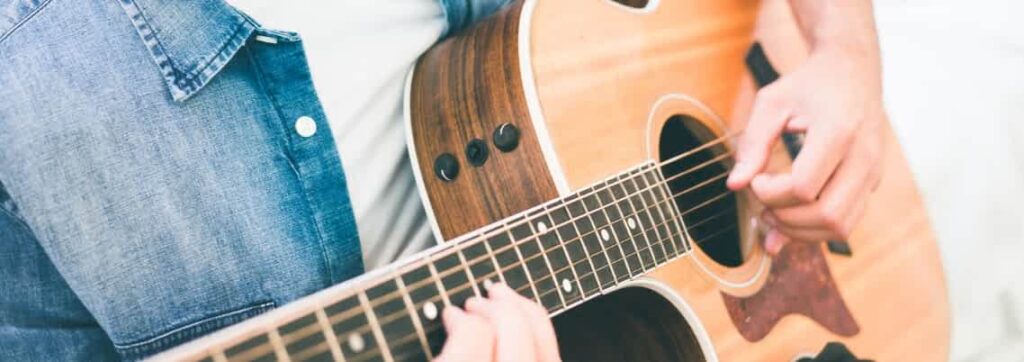
Mahogany necks are common due to their warm tonal properties and stability. This helps the guitar withstand temperature changes.
If I’m using phosphor bronze strings, they pair well with a mahogany neck to produce rich, vibrant tones. The right neck profile and material mean my guitar feels like an extension of myself, performing seamlessly with me during gigs.
Caring for Your Acoustic Guitar
Taking excellent care of an acoustic guitar enhances its sound quality and extends its lifespan. Regular maintenance and thoughtful string choices are key components in ensuring your instrument remains in top condition.
Maintenance and Longevity
Keeping an acoustic guitar in good shape involves routine upkeep.
I always make sure to wipe down the body and neck with a soft cloth after playing.
Dust and oils from fingers can build up, impacting both appearance and sound.

Temperature and humidity levels also matter significantly. I use a humidifier to maintain optimal environmental conditions, preventing the wood from warping or cracking. It’s especially important for those like me who live in areas with fluctuating weather.
Playing often is surprisingly beneficial. Regular use helps me notice any minor issues early, making them easier to address before they escalate. Maintenance becomes a routine rather than a costly repair job, keeping the guitar sounding great.
String Choices and Replacement
Choosing the right strings can dramatically influence both the tonal quality and the longevity of a guitar.
Phosphor bronze strings are popular for their warm, bright tone, which fits well with various playing styles, such as fingerstyle or hard strumming.
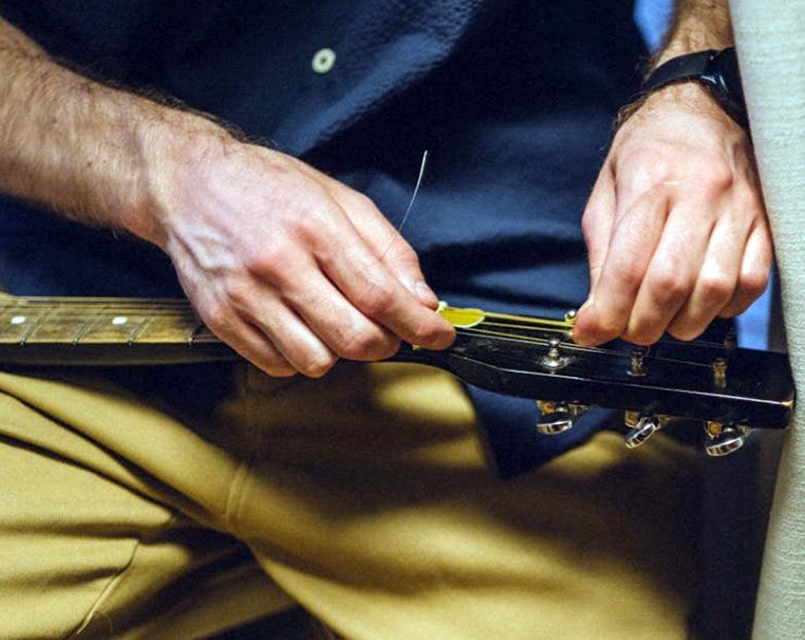
I favor acoustic-electric guitars, often paired with strings designed for amplified sound. Each string type has its unique acoustic properties, impacting my playing experience.
Replacing strings regularly is crucial. I find that changing them every few months or after heavy playing keeps the guitar sounding fresh.
When I notice the tone dulling or tuning becoming unstable, I know it’s time for a change. A simple string replacement can reinvigorate the entire instrument.
Best Acoustic Guitar for Gigging
Core Overview
When searching for the best acoustic guitar for gigging, many musicians turn to electro acoustic guitar that offer both versatility and sound quality. It’s essential to test acoustic guitars in various settings to find one that suits your playing style and performance needs.
Among the best acoustic electric guitars, Martin guitars are often praised for their craftsmanship and rich tone, making them a favorite choice for performers.
If you’re looking for your first acoustic guitar, consider models that are not only comfortable to play but also equipped for amplification with acoustic guitar amps.
A new acoustic guitar with built-in electronics can enhance your live performances, allowing you to easily connect to sound systems.
Ultimately, finding the best acoustic electric guitar can significantly improve your gigging experience and overall sound.
Keep reading…
For anyone starting their musical journey, the Best Beginner Guitar Amp provides valuable insights and recommendations to help you choose the perfect amplifier to complement your practice and performances.
FAQ's
Most musicians often gravitate towards the Martin D-28 due to its rich tone, versatility, and legendary craftsmanship, making it a popular choice for a wide range of musical styles.
The best acoustic guitar in the world is often considered to be the Martin D-45, renowned for its exceptional craftsmanship, rich sound quality, and stunning aesthetics.
Maton guitars are highly regarded for their exceptional craftsmanship, premium Australian tonewoods, and innovative design features that contribute to their rich, balanced sound and playability.
The most comfortable acoustic guitar to play is often considered to be the Taylor GS Mini, thanks to its smaller body size and ergonomic design that makes it easy to handle and play for extended periods.


